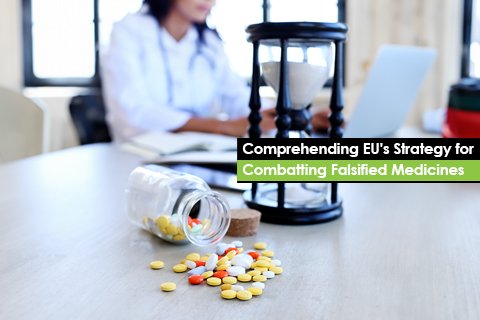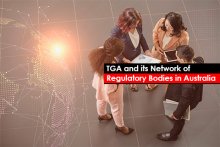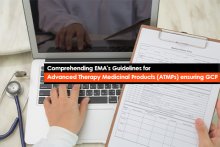Falsified medicines pose a significant threat to public health, undermining trust in the healthcare system and jeopardizing patient well-being. Recognizing the gravity of this issue, the European Union (EU) has implemented a multifaceted strategy to combat the distribution and marketing of falsified medicinal products within its member states.
a. Understanding Falsified Medicines
Falsified medicines are counterfeit products deliberately designed to deceive consumers by mimicking legitimate pharmaceuticals. These products may contain incorrect ingredients, improper dosages, or no active ingredients at all, posing severe risks to patients' health and safety. Moreover, the proliferation of falsified medicines contributes to antimicrobial resistance, compromises treatment efficacy, and erodes confidence in healthcare systems.
b. Regulatory Challenges: Navigating a Complex Landscape
Combatting the trade in falsified medicines presents formidable Regulatory challenges. These include:
- Globalized Supply Chains: The interconnected nature of pharmaceutical supply chains increases the risk of infiltration by falsified products, necessitating robust Regulatory frameworks and international cooperation. As pharmaceutical manufacturing becomes more globalized, ensuring the integrity of the supply chain from raw materials to finished products is crucial to preventing falsification.
- Technological Advances: Rapid advancements in technology have enabled counterfeiters to produce increasingly sophisticated falsified medicines, heightening the need for innovative authentication solutions and Regulatory strategies.
- Online Pharmacies: The rise of online pharmacies has facilitated the illicit trade in falsified medicines, posing challenges in monitoring and regulating e-commerce platforms to ensure consumer safety. Regulatory agencies must collaborate with internet service providers and law enforcement agencies to identify and shut down illegal online pharmacies that distribute falsified products.
- Resource Constraints: Regulatory agencies face resource constraints in conducting comprehensive market surveillance and enforcement activities, necessitating prioritization and collaboration with industry stakeholders. Public-private partnerships can help leverage resources and expertise to combat falsification effectively.
c. The EU's Response: A Comprehensive Approach
In response to these challenges, the EU has implemented a comprehensive strategy to safeguard public health and maintain the integrity of the legal supply chain.
Key components of this strategy include:
- Legislation: The EU's Falsified Medicines Directive establishes harmonized measures to prevent falsified medicines from entering the legal supply chain, ensuring consistent standards across member states. This directive Regulates the serialization of medicinal products, enabling the tracking and tracing of products throughout the supply chain to prevent diversion and counterfeiting.
- Safety Features: Mandatory safety features, such as anti-tamper devices and unique identifiers, enable the verification of medicinal product authenticity, empowering healthcare professionals and patients to detect falsified products. These safety features are designed to be easily recognizable and tamper-evident, assuring product integrity.
- Common Logo: The introduction of a common EU-wide logo enables consumers to identify legitimate online medicine suppliers, mitigating the risk of purchasing falsified medicines from illegal sources. This logo serves as a visual indicator of a website's compliance with EU regulations, instilling confidence in online purchases of medicinal products.
- Awareness Campaigns: Collaborative efforts with the European Medicines Agency (EMA) and member states raise awareness about the risks associated with falsified medicines, empowering consumers to make informed decisions. These awareness campaigns highlight the importance of purchasing medicinal products from authorized sources and reporting suspicious products to Regulatory authorities.
- Inspections and Monitoring: Competent authorities conduct rigorous inspections and market surveillance to ensure compliance with legal Regulations, detecting and deterring the circulation of falsified products. These inspections may include physical audits of manufacturing facilities, wholesalers, and pharmacies, as well as surveillance of online marketplaces and border controls.
- International Cooperation: The EU collaborates with international organizations to enhance global coordination in combating the trade in falsified medicines, strengthening Regulatory frameworks and enforcement mechanisms. This includes sharing intelligence and best practices, harmonizing standards, and supporting capacity-building initiatives in regions vulnerable to falsification.
- Withdrawal and Notification: If falsified medicinal products are detected, they must be physically separated and stored away from legitimate products. Wholesale distributors must immediately inform the competent authorities and the marketing authorization holder of any suspected falsified medicinal products. This facilitates rapid response and investigation to prevent further distribution and ensure patient safety.
- Regulation of Brokers: New agents involved in the distribution of medicines, such as brokers, are now subject to control to ensure they do not facilitate the distribution of falsified medicines. This includes conducting background checks, verifying credentials, and implementing risk-based oversight to mitigate the risk of falsification.
Conclusion: Safeguarding Public Health
In conclusion, the EU's comprehensive strategy to combat falsified medicines underscores its commitment to safeguarding public health and maintaining trust in the healthcare system. By implementing stringent legislative measures, deploying innovative safety features, raising awareness, and fostering international cooperation, the EU endeavors to protect patients from the dangers of falsified medicines.





